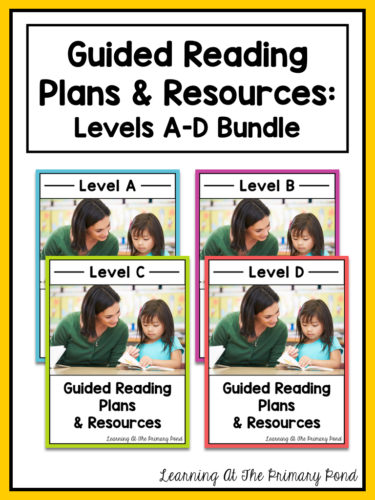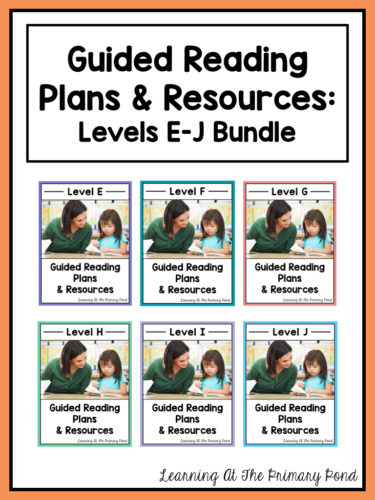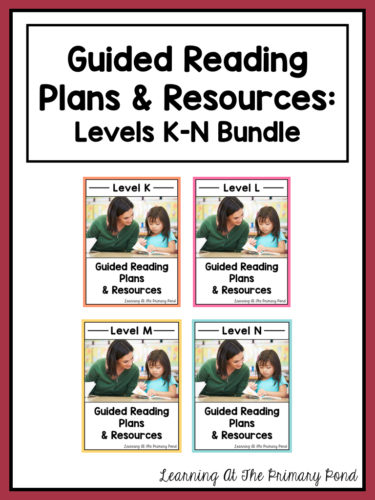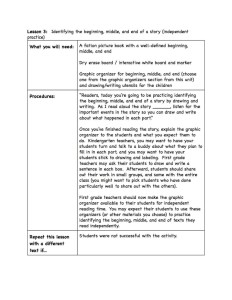If you teach guided reading, you probably choose leveled texts for your groups.
But how do you know when to move a student (or an entire group) “up” a level?
In this post, I share some tips to help you make that decision!
 Photo Credits: Beata Becia, Shutterstock
Photo Credits: Beata Becia, Shutterstock
Tip #1: Take running records consistently.
Running records will make any leveling decisions much easier! 🙂 I take one running record per guided reading group. So if I teach three guided reading groups in a day, that means I take three running records (one on a student from each group).
As for texts—I have the student read part or all of the text that we read during the PREVIOUS guided reading lesson. So if we read Book A on Monday and I don’t see the group again until Wednesday, the running record student reads part of or all of Book A to me for the running record. (Meanwhile, the other students reread familiar texts independently.)
When I take a running record, I make note of words that students read correctly and incorrectly. I also do a quick fluency rating (on a scale of 1-3) and ask the student to quickly retell the text. I will ask an inferential thinking question or two, if time permits. Later on, I go back and score students’ reading accuracy and comprehension.
To learn more about running records, check out THIS POST.
Tip #2: Know the benchmarks for independent and instructional reading levels.
When we read with students during guided reading, we want to choose texts that are at their instructional levels—so that they can be successful with our support, and still have some challenges to work through.
If you take running records consistently, you’ll be able to tell if books are appropriate for a student’s instructional level (or if they are too difficult or too easy).
If you’re not sure how to calculate independent or instructional reading levels, you can sign up for a free account on the Fountas and Pinnell website to view this document: http://www.fountasandpinnell.com/resourcelibrary/resource?id=281
Tip #3: Look for consistent evidence that the student’s (or group’s) current reading level has become their independent reading level.
If I take a running record on a guided reading book and it turns out that the book is “easy” for the student (at his/her independent reading level), that’s evidence that he/she might be ready to read books that are more difficult.
However, I always look for confirmation! I take another running record with a different book (preferably a different genre). I want to see two strong running records before I decide to move the student up a reading level.
One thing to keep in mind: If you take running records using my method, the student will already have read the book once before. If you’re really not sure if a child is ready to move up, I suggest also taking a “cold” running record to double-check.
Tip #4: Keep in mind that you can always return to the previous reading level!
If you find that you’ve moved a student (or a group) up one level, and they’re just not ready yet, move them back down. No big deal!
I don’t announce or share the reading level change with my students, so it’s not discouraging if they have to move back down—they don’t even know. 😉
Looking for more guided reading guidance?
If you’re looking for resources and support in teaching guided reading, check out my guided reading bundles! I’ve featured “typical” Kindergarten, first grade, and second grade guided reading bundles below. Happy teaching!















